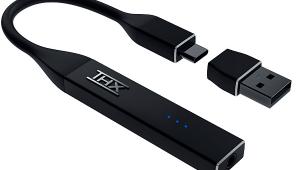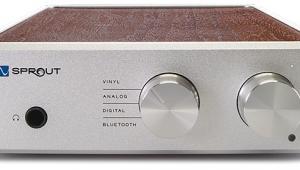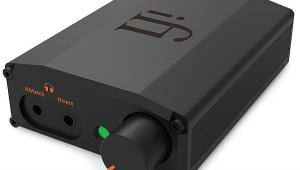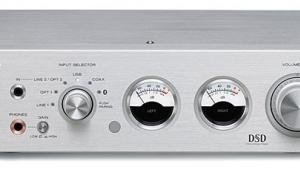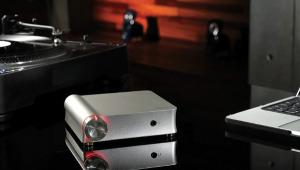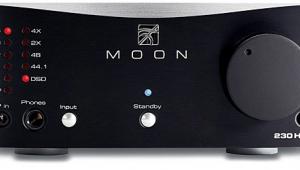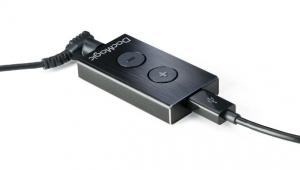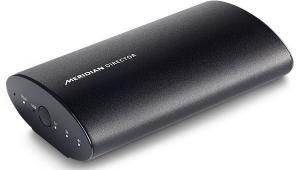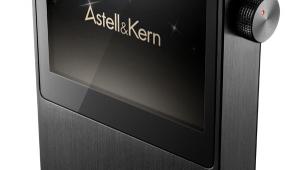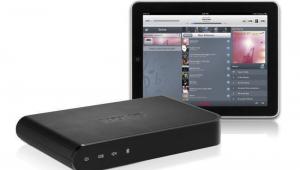Micromega AirStream WM-10 Wireless DAC
From Air to iTunity
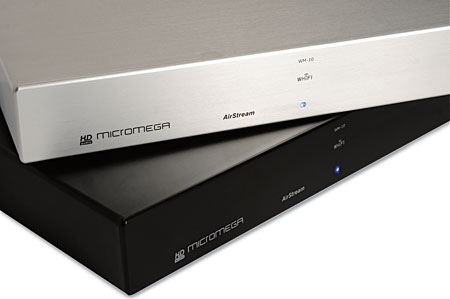
I used to say, “Disk is cheap,” even back in the ’80s when, let’s be honest, it really wasn’t. A 40-megabyte disk drive—go ask your dad what a megabyte is—went for $400 and was about enough to store a 4-minute CD track. Today, I have a pair of 250-gigabyte external drives that ran me half that amount even a few years ago. Together with my laptop, I’ve got a system that easily fulfills my every iTunes fantasy—except one. I still have to rely on an iPod and iPod docking station to get music from the computer rig to my main system across the room. If that’s been bugging you too, check out the Micromega AirStream WM-10. It’s an 802.11n wireless router that your iTunes library can connect to, all for a price that—well, there’s the rub. This thing ain’t cheap.
In the Land of Plenty
Minimalist but purposeful is the only way to describe the $1,595 WM-10. French manufacturer Micromega makes no bones about the fact that the WM-10 starts life as a $99 Apple Airport Express. But Micromega puts money into heavy-duty R-core transformers to keep things svelte and produce less electromagnetic field (EMF) interference with other electronics. Beyond its core, the AirStream WM-10 is essentially a wireless router with a built-in digital-to-analog converter, albeit a very high-quality one. A Marvel DSP chipset, 24-bit/192-kilohertz Cirrus Logic 4344 DACs, and attention to reduction of reclocking jitter elevate the WM-10 from consumer grade to audiophile grade, according to the manufacturer. There’s also no arguing that, free of laser-read errors and the mechanical vibrations that are inherent in even the best CD transports, the WM-10 is one pure way to get your music on.
I said disk was cheap, and it really is. If you’ve turned your nose up at MP3 players in general, and the proprietary world of the iPod in particular, here’s your opportunity to jump the shark. Almost, anyway. You still need to rock iTunes (Mac or PC). But you can simply import all of your CDs into iTunes in their full uncompressed WAV glory, exactly as the good Redbook says. And you don’t need to clog up your computer with all your tunes, either. You can easily set up your iTunes library to drop your tunes onto an external hard drive (or two, or three). You can find 1-terabyte external drives for $100 or less, which will easily hold over 1,400 uncompressed CDs. The WM-10 will give you wireless access to all of that music. You can also connect multiple AirStream units together to extend your system throughout your house. Compare that to the dedicated and far more proprietary wholehouse systems out there, some of which ran up to six figures just a few years ago, and the Micromega solution seems like a bargain.
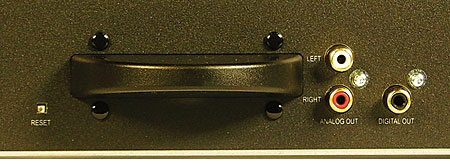
The AirStream’s featureless front panel only has a blue LED to indicate that it’s on. The back panel is nearly as barren. Micromega provides a power rocker switch, a digital coaxial output, and two single-ended (RCA) analog outputs. Micromega also includes a detachable power cord and an analog RCA cable, although both are generic and Micromega encourages experimentation with better grades of each.
The World at Your Fingertips
You’ll need an iPhone or iPod touch to control your iTunes library on your iTunes computer, using the free downloadable Apple Remote app. You can then synchronize them via a four-digit code that the Apple Remote app generates (both must be hooked to the same wireless network for this to happen). Then you can access playlists, artists, shuffle songs, and even search, just as if you were at your computer, even if you’re a few rooms away. It’s Apple, so you get cool cover art too. It works pretty well overall. I noticed a lot of latency where the iPod touch showed the last song played instead of the one currently playing, but I can’t blame this on the AirStream.
As shipped, the AirStream WM-10 is an island. It’s a closed 802.11n wireless network, not connected to the Internet. I could listen to music on the iTunes library when the PC was joined to the AirStream network, but I had to rejoin my Internet-connected home network to download songs from the Internet (or to even get artist and song title information for CDs I wanted to import into iTunes). I then had to switch the PC back to the AirStream network to listen to those songs on my home system. Of course, while my PC was joined to the AirStream network, I couldn’t surf the Internet. Without seamless Internet access, using iTunes quickly becomes an exercise in frustration.
- Log in or register to post comments
